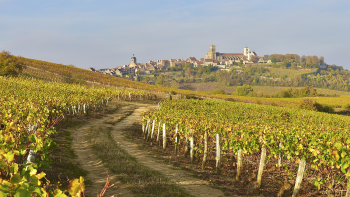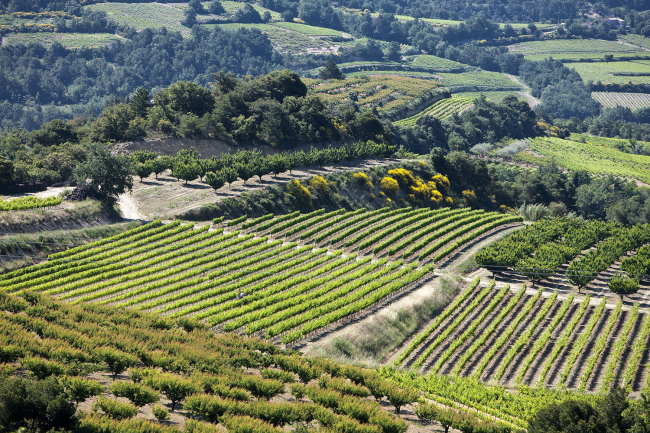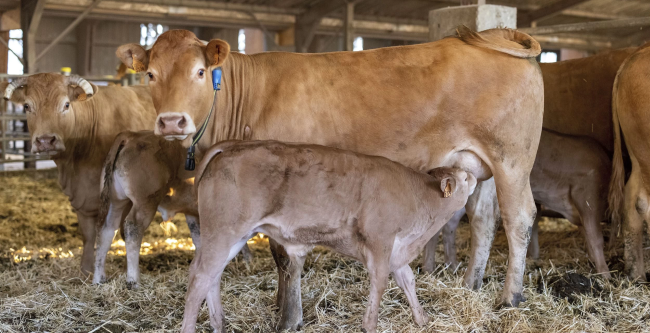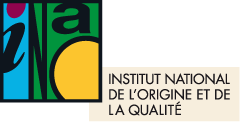This article is older and has been archived.
It remains accessible, but the information provided may be out of date or incorrect.
News
Wine PDO: a new mechanism for innovative specifications
Faced with the challenges of climate change and changing societal expectations, the wine industry is making technical innovation one of the key elements of its resilience. To put this principle into practice, on February 7, 2023, the CNAOV introduced the Innovation Evaluation Scheme (DEI). Objective: to provide the means to experiment with innovations without losing the benefit of appellations, within a defined framework guaranteeing, in particular, respect for fundamentals.

"Innovate to stay" is one of the main thrusts of the wine industry's strategy for adapting to climate change. This orientation calls into question the procedures in place within the Institut national de l'origine et de la qualité (INAO): the evolution of specifications must therefore be more reactive to face climatic evolutions and integrate societal expectations, without denying the fundamentals of appellations.
Following these observations, the INAO has therefore undertaken a review of its procedures and developed tools available to defense and management organizations (ODG). Thus, in 2021, the Comité national des Appellations d'origine relatives aux vins et aux boissons alcoolisées, et des boissons spiritueuses (CNAOV) validated a directive known as VIFA (variétés d'adaptation à fin d'adaptation), enabling ODGs wishing to do so to introduce, on a limited scale, into their specifications the possibility of trying out, subject to precise monitoring, disease-resistant grape varieties or those adapted to climatic changes. To date, some twenty specifications have made use of this option.
The Comité national des Appellations d'origine relatives aux vins et aux boissons alcoolisées, et des boissons spiritueuses (CNAOV), acting on a proposal from the "scientific, technical and innovations" working group, made up of members of the national committee and chaired by Bernard Angelras, took another step forward on Tuesday February 7. Indeed, it approved the possibility of extending these approaches to cultural or oenological practices, within well-defined proportions and frameworks, respectful of the principles of the appellations, in particular the link to terroir.
These policy guidelines will then be translated into a directive that should be validated at the National Committee meeting in June 2023, following the opinion of the regional committees (CRINAO).
These conclusions thus introduce the possibility of setting up, at the level of each appellation, a dispositif d'évaluation des innovations (DEI). It is thus conceivable to introduce for testing purposes, in the specifications of the appellations, on a small scale and for a given duration, innovative production conditions, cultivation or oenological practices, within the framework of a suitable monitoring protocol.
This device constitutes an opportunity to bring innovation back into the appellations and make the ODG and operators players in the implementation of strategies for adapting to climate change and mitigating its effects, as well as for ecological transition. The assessment of these evaluations, as well as an analysis of the appropriation of these practices at appellation level, will make it possible, at the end of a period defined in the protocol, to either fully integrate the practice, frame it, or reject it.
It is also planned to multiply and diversify the use of scientific expertise in order to be able to monitor the adaptation of these practices to climatic or ecological issues, but also to assess their impacts on product characteristics and their link to the terroir.
.
"With this scheme, INAO is giving ODGs the tools they need to take their place in 21st century viticulture"
Some requirements of the scheme have also been validated:
- Accessibility to all operators
- Limitation of quantities implemented and marketed
As this is an evaluation process, the operator should only be able to implement the evaluated innovation on limited surfaces or volumes. In view of the diversity of production conditions and their impact on the product, the principle of limiting the innovation introduced, inspired by what has been put in place for VIFAs, has been adopted - 5% of surfaces implemented, excluding non-treatment zones (ZNT), or 10% of volumes after assembly for release for consumption - but its scope will need to be applied on a case-by-case basis, taking into account the specific features of the condition to be assessed. In any case, the precise methods for limiting surfaces or volumes released for consumption will be indicated in the specifications.
Monitoring of innovations
As this process is carried out by operators in the appellation, its monitoring protocol must be adapted, and it is advisable that the definition of the protocol, the collection and processing of data, and the drawing up of the assessment report be accompanied by an organization authorized to conduct experiments, designated by the ODG.
Operator commitment
The operator volunteering to take part in this collective appraisal must commit to carrying out the observations, measurements and sampling defined by the protocol. To this end, they sign an agreement with the ODG and the INAO.
Review clause
This agreement sets out the duration of the assessment period and the date of the review clause when the assessment results will be presented to the INAO authorities. The duration of the evaluation will depend on the condition to be evaluated.
Reversibility
This agreement also stipulates that the operator agrees to submit to the decisions of the INAO authorities at the end of the evaluation period: the modified production condition, if unsatisfactory, may then be abandoned by decision of the National Committee and after advice from the ODG. Thus, if a return to the initial condition is decided, the winegrower will either have to change his practices or his production tool, or no longer claim the benefit of the AO.
Between now and the June committee meeting, additional requirements will also have to be specified, such as the maximum number of innovations that can be introduced, in order to guarantee the readability and coherence of the specifications.
.
"Faced with societal expectations and the climate emergency, appellations of origin must adapt without losing their fundamentals"
All the latest news on SIQO sustainability
As part of their partnership, INRAE and INAO organized a webinar on SIQO on November 25, 2025, on the theme "Better...
News

News
Meeting under the aegis of INAO, the Comité national des appellations d'origine relatives aux vins, boissons alcoolisées...
News

News
The regional interprofessional organization for Veau d'Aveyron et du Ségala (IRVA) held its extraordinary and ordinary...
News

News
